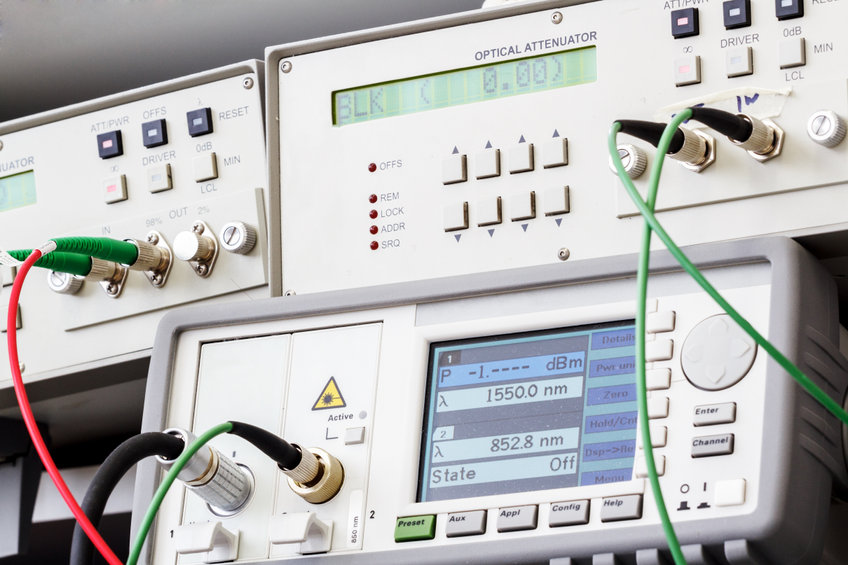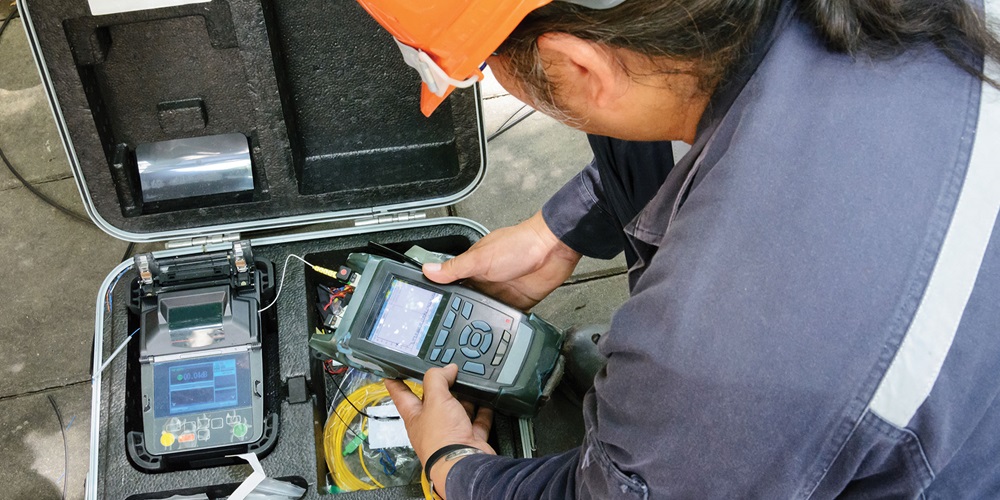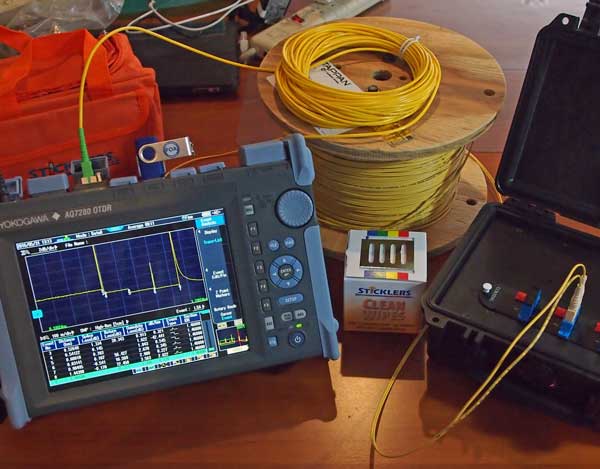Unveiling the Key Uses of Optical Fibre Checking for Reliable Information Transmission
In the realm of modern-day communication, optical fibre testing emerges as an essential practice for enhancing data transmission. By utilizing methods such as Optical Time Domain Name Reflectometry (OTDR) and insertion loss assessments, network operators can efficiently pinpoint and deal with problems that may compromise signal integrity. As the demand for faster and much more trusted links proceeds to climb, the effects of these screening methods prolong beyond immediate mistake detection, influencing long-term network efficiency. Recognizing the diverse applications of optical fiber screening invites a deeper exploration right into its crucial duty in forming the future of data communication.

Significance of Optical Fiber Screening
The importance of optical fiber testing can not be overemphasized, as it works as an essential part in guaranteeing the integrity and effectiveness of data transmission systems. In an age where high-speed communication is vital, any shortages in fibre optics can cause significant information loss and reduced efficiency. Strenuous testing methods are vital to confirm the stability and performance of optical cables.
Examining permits for the recognition of issues such as micro-bends, macrobends, and splice losses that can prevent signal top quality. It gives understandings right into the general attenuation and bandwidth capacities of the fibre, making sure that the network satisfies certain operational standards. Normal screening not only enhances system performance yet additionally lengthens the life expectancy of the facilities by determining potential issues prior to they intensify into pricey failures.

Kinds of Optical Fibre Tests
Numerous sorts of optical fibre examinations are conducted to make certain the performance and dependability of fibre optic networks. These tests can be classified into a number of vital types, each serving a details purpose in examining the integrity of the fibre.
First, Optical Time Domain Name Reflectometry (OTDR) is a popular examination that recognizes faults, entwines, and adapters within the fiber. By sending pulses of light and evaluating the mirrored signals, technicians can identify problems along the fibre's length.
2nd, insertion loss examinations evaluate the amount of signal loss when light travel through ports or splices, which is crucial for maintaining network performance.
Third, return loss tests determine the amount of light showed back in the direction of the resource, giving insights into the quality of connections and potential sources of interference.
Furthermore, continuity tests make sure that the fiber course is total, permitting professionals to validate that the fiber is undamaged without any breaks. optical fibre diameter visit our website analyser.
Lastly, aesthetic mistake locators make use of noticeable light to recognize breaks or extreme bends in the fiber, helping in quick troubleshooting. Jointly, these examinations develop an extensive method to preserving optimal performance in fiber optic networks.

Applications in Network Maintenance
In modern telecommunications, reliable network maintenance counts heavily on optical fibre screening to determine and rectify issues without delay. Normal testing ensures that the network runs at ideal performance degrees, minimizing downtime and improving user experience.
Among the main applications of optical fibre screening in upkeep is the detection of mistakes, such as breaks, bends, or improper links. Techniques like Optical Time Domain Name Reflectometry (OTDR) enable specialists to locate these problems accurately and analyze the high quality of the fibre web link. Additionally, loss screening verifies the honesty of the optical path, ensuring that signal depletion remains within appropriate limitations.
Regular maintenance screening also assists in preventive actions, determining possible issues prior to they escalate right into significant failures. This aggressive method can conserve organizations both time and funds. Throughout upgrades or expansions, optical fibre screening makes certain that new setups incorporate perfectly with existing framework.
Enhancing Information Transmission Reliability
Efficient network upkeep via optical fibre testing not just addresses prompt concerns yet additionally plays a considerable function in boosting information transmission reliability. By identifying faults, determining signal loss, and assessing the overall condition of fiber optic wires, testing makes sure that possible troubles are fixed before they escalate into significant interruptions.
Routine optical fibre testing, such as time-domain reflectometry Related Site (TDR) and optical time-domain reflectometry (OTDR), enables professionals to pinpoint the exact locations of breaks, flexes, or adapter concerns within the network. This proactive basics approach not just minimizes downtime yet likewise maximizes the efficiency of information transmission by making certain that the paths for signals are clear and operating effectively.
Furthermore, testing aids in verifying adherence to industry criteria and requirements, which is crucial for maintaining the honesty of information circulation. By guaranteeing that each connection meets called for limits for loss and high quality, organizations can bolster their self-confidence in the integrity of their information networks.
Eventually, purchasing comprehensive optical fiber screening not only enhances information transmission dependability but additionally sustains the long-lasting functional effectiveness of interaction frameworks.
Future Trends in Fibre Testing
Arising innovations are poised to revolutionize fiber testing, paving the means for improved efficiency and accuracy in data transmission diagnostics (ofda). As the need for faster internet and greater data transfer remains to increase, the integration of innovative tools such as fabricated knowledge (AI) and machine discovering (ML) is readied to change conventional fiber testing approaches. These technologies will certainly enable anticipating upkeep and automated fault discovery, dramatically minimizing downtime and enhancing network dependability
In addition, the adoption of Web of Points (IoT) devices will certainly facilitate real-time tracking of fiber networks, allowing for instant identification of efficiency concerns. This shift in the direction of aggressive management will decrease disruptions and enhance information circulation.
Additionally, technologies in optical time-domain reflectometry (OTDR) and new screening criteria will certainly improve the precision of dimensions, making certain that data integrity is preserved throughout the transmission procedure. The arrival of 5G technology additionally necessitates the development of extra sophisticated fibre testing methods to sustain its high-speed needs.
Verdict
In final thought, optical fibre testing is essential for maintaining reliable information transmission within communication networks. Normal screening not only ensures conformity with industry criteria yet likewise helps with proactive upkeep, eventually contributing to the lasting dependability and performance of fiber optic systems.